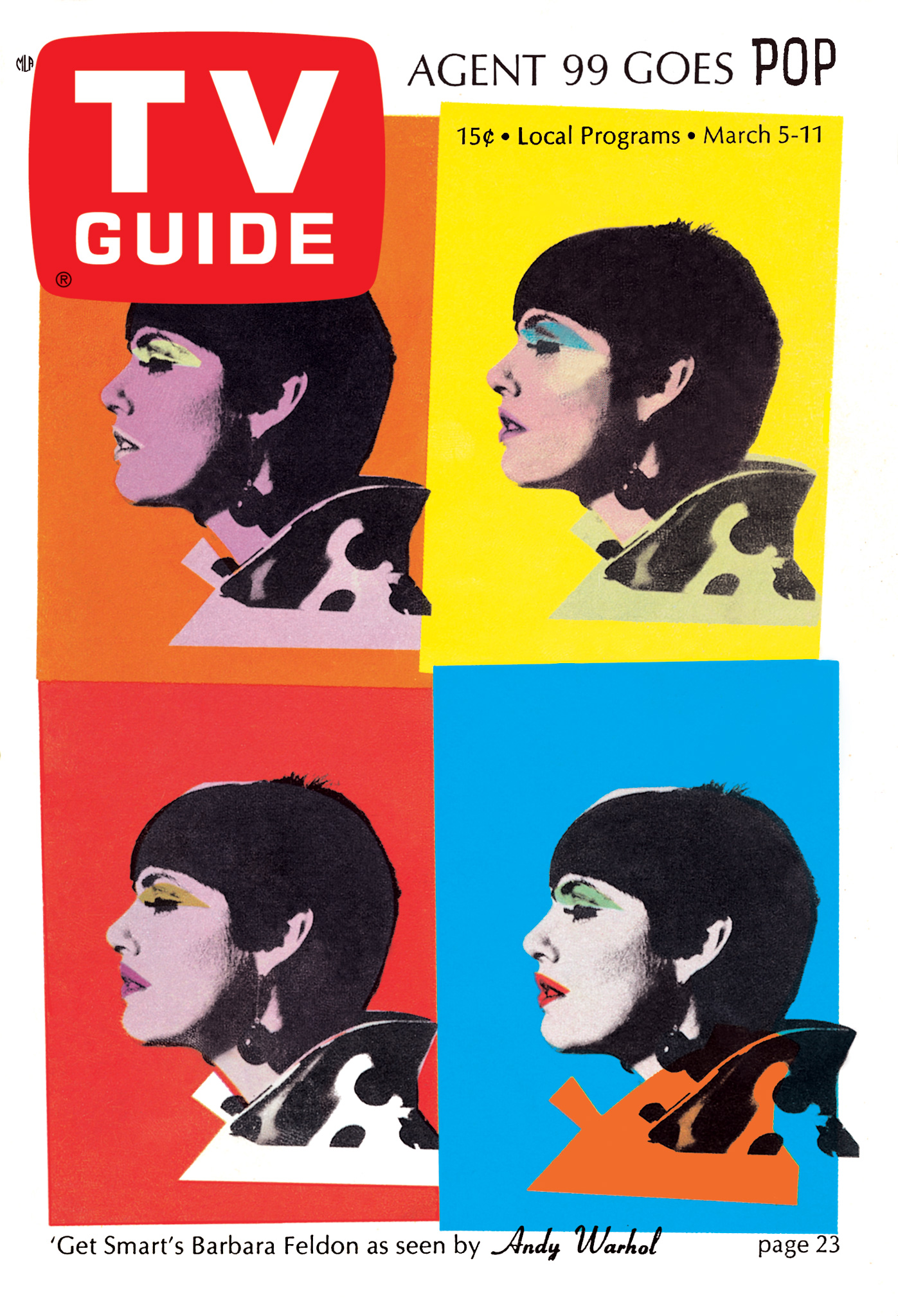X
Join or Sign In
Sign in to customize your TV listings
By joining TV Guide, you agree to our Terms of Use and acknowledge the data practices in our Privacy Policy.
Look back at some of the memorable covers done by huge artists

1 of 5 TV Guide Magazine Cover By Andy Warhol
1AndyWarhol
ANDY WARHOL"I would imagine that Warhol had a subscription to TV Guide," says Matt Wrbican, the chief archivist at the Andy Warhol Museum in Pittsburgh. "We found several old copies in his archives." The Pop Art icon designed one cover for us (March 1966), featuring Get Smart star Barbara Feldon. (He also designed the fashion spread inside.) "The color detail of the eye shadow and lips seems to be so mechanically made," Wrbican notes. "He was obviously going for something very colorful to grab attention on magazine racks." The artist, who was then at the height of his early fame, loved fashion, celebrities, sitcoms, talk shows and variety shows. "This commission would combine his absolute favorite things," says Wrbican. "He was a pretty voracious consumer of pop culture, and TV Guide certainly was a big part of pop culture."
2 of 5 TV Guide Magazine Cover By Salvador Dali
2SalvadorDali
SALVADOR DALÍ Having a hard time interpreting this original Salvador Dalí cover painting? Try getting through our June 1968 interview with the flamboyant Surrealist, in which he attempts to explain it:TV Guide Magazine: Would you care to interpret the cover you painted for TV Guide Magazine?Dalí: Ahhrrgh! TV — everything rigid, square, very clear. Soft watches and soft pianos and soft violoncellos — I create that. Now I create soft television set!TV Guide Magazine: Why thumbs?Dalí: Shape. Thumbnail. Like TV.... Ees desert. Dalínian landscape. Desert of Spain. Also like desert of California. Put TV set in thumbs. In usual desert.TV Guide Magazine: Would you comment on the future of TV, Mr. Dalí?Dalí: Laser beams! DNA...oxydic nucleic acid...holograms! I make hologram of God!...I make God with holograms. Show on TV. Fantastique!
3 of 5 TV Guide Magazine Cover By Peter Max
3PeterMax
PETER MAX Our November 1988 election issue was right up counterculture artist Peter Max's alley. "I am very patriotically involved in this amazingly creative country, which TV Guide is a major aspect of," says Max, 75, who painted two other covers for us. On this one, he explains, "America's creativity is being broadcast out to the world. The rays of planet Earth are going into space and the satellite next to the star bounces off sounds and images onto American television." The vibrant image of a flag waving through the screen, he says, was a spontaneous creation, but the colors are intentionally symbolic. "The flag is red, white and blue. TV Guide's logo is red and white, and that's what I remember thinking at the time."
4 of 5 TV Guide Magazine Cover By LeRoy Neiman
4LeRoyNeiman
LEROY NEIMAN Our art director scored a major touchdown by commissioning LeRoy Neiman to kick off the September 1973 Football Preview issue. The Expressionist, best known for his long association with Playboy, built his career by painting at live sporting events around the globe. Neiman, who died last year, did another cover for us, of 1991's Super Bowl XXV. "For an artist," Neiman said in 1972, "watching a [Joe] Namath throw a football or a Willie Mays hit a baseball is an experience far more overpowering than painting a beautiful woman or a leading political figure."
5 of 5 TV Guide Magazine Cover By Norman Rockwell
5NormanRockwell
NORMAN ROCKWELL Norman Rockwell's art paints a picture of American life, so who better to create an August 1970 cover honoring America's then-king of late night? The painter — a favorite of Steven Spielberg and George Lucas, who collect his work — was doing portraits for the Saturday Evening Post in the '60s, says Joyce K. Schiller of the Rockwell Center for American Visual Studies, "so this cover is in line with the illustrations he was creating in that decade." Rockwell's detail-oriented talent was hardly diminished when he painted this at age 76. "Notice how he conveyed the creases and wrinkles that were an essential part of Carson's face," says Schiller. "There is no sense of airbrushed features. Rockwell painted what he saw."